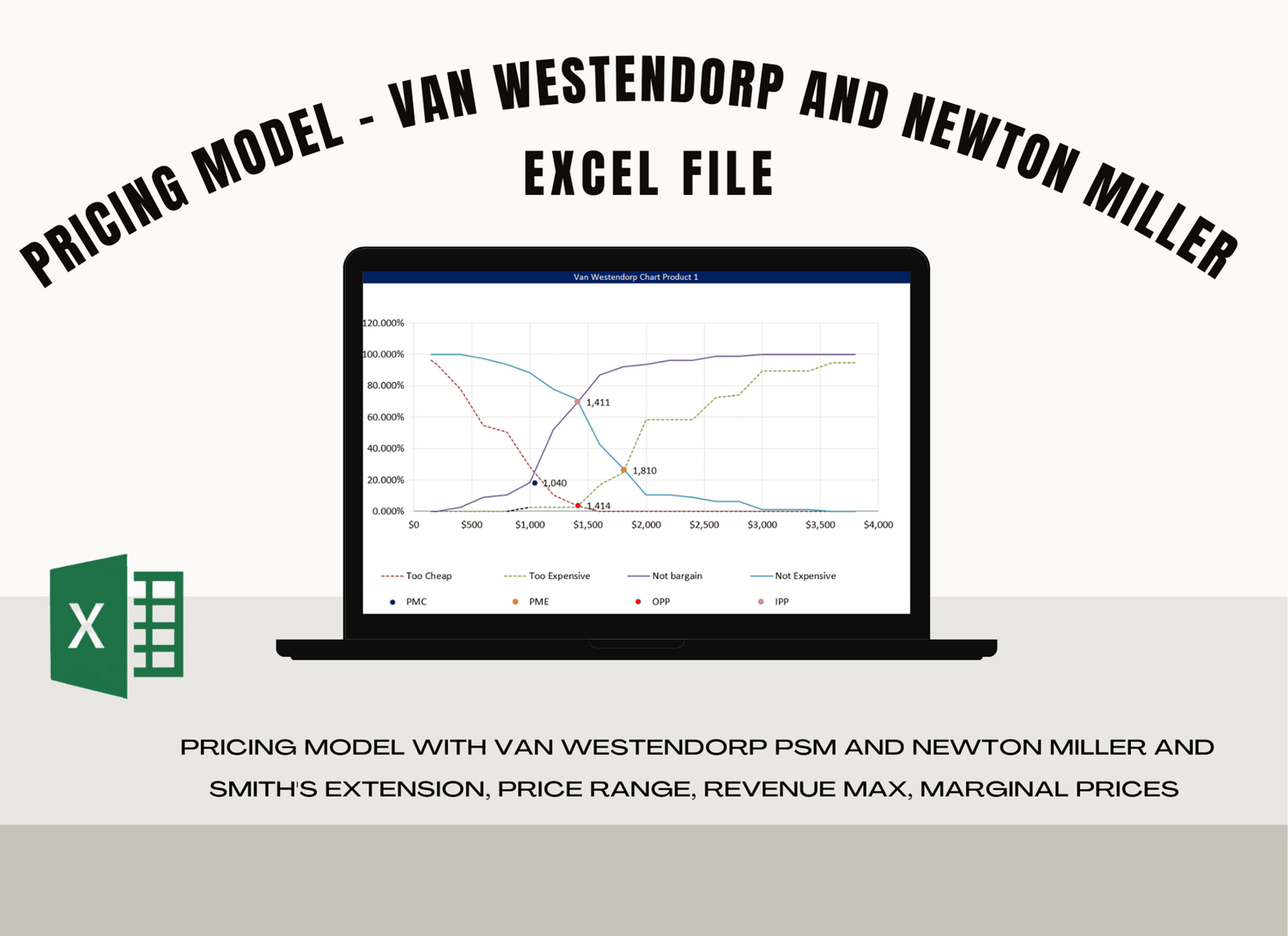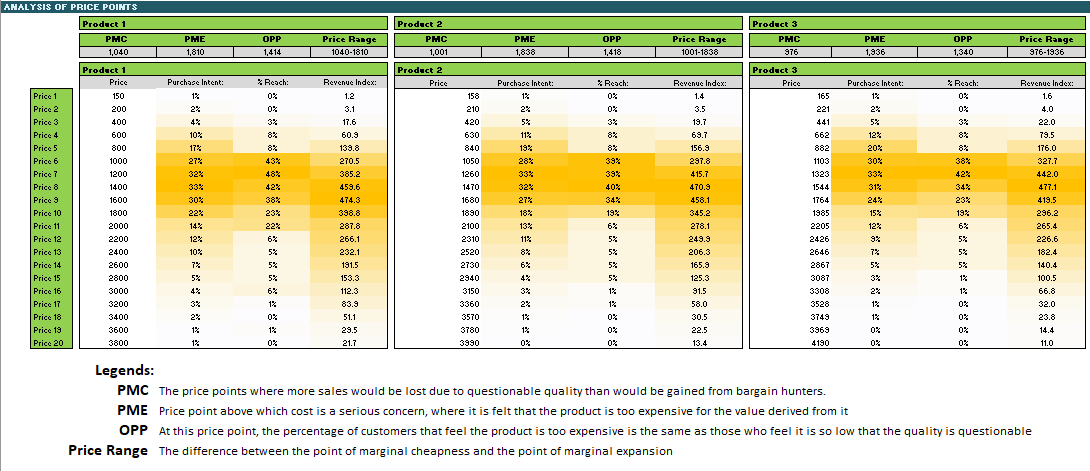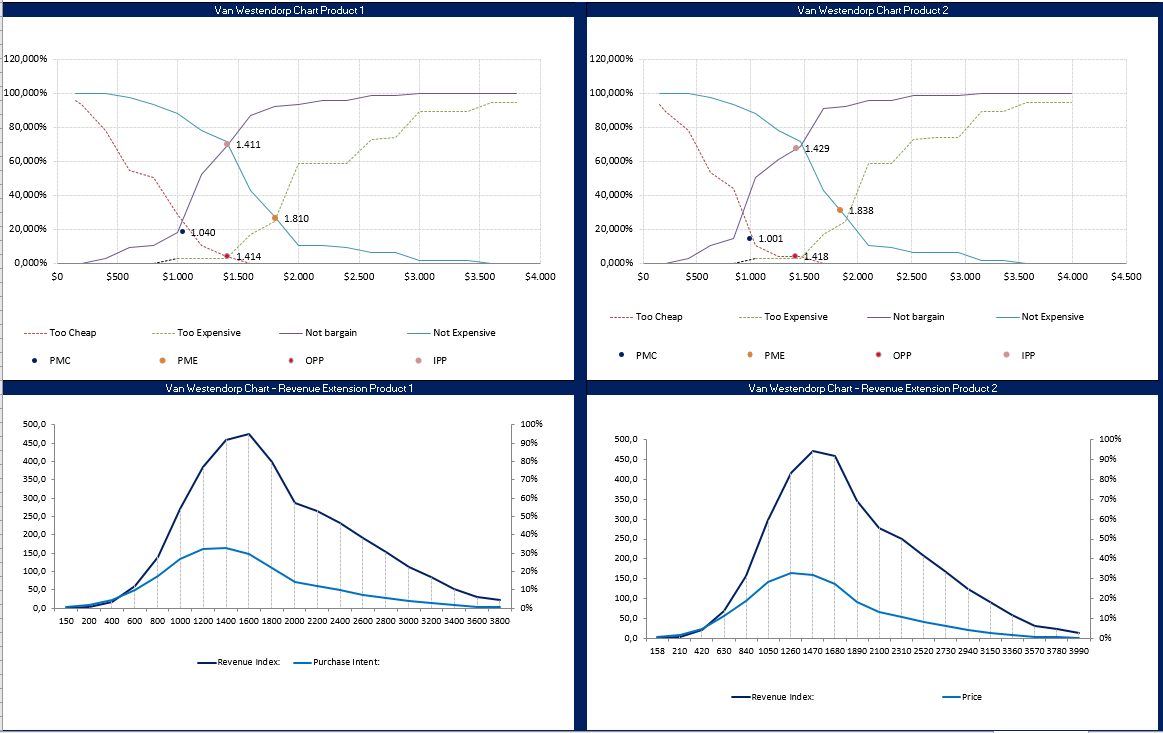Product Pricing Model - Van Westendorp PSM
Van Westendorp pricing (the Price Sensitivity Meter)
Peter Van Westendorp introduced the Price Sensitivity Meter in 1976 and it has been widely used throughout the market research industry. It uses open-ended questions combining price and quality. Since there is an inherent assumption that price reflects value or quality, the technique is not useful for a true luxury good (when sales volume increases at higher prices).
In this methodology, each respondent is asked four questions on the perception of price:
1. At what price would this product be so cheap that you would doubt its quality and not consider it? <<called the "Too Cheap" price>>
2. At what price would this product be a bargain—an excellent buy for the money? <<called the "Bargain" price>>
3. At what price would this product seem expensive, but would you still consider buying it? Called the "Get Expensive" price>>
4. At what price would this product be too expensive for you to consider it? <<called the "Too Expensive" price>>
This template plots the data from these four questions from low to high prices.
Besides PSM, this template uses the Newton-Miller-Smith purchase intent extension, which adds two 5-point scale questions to assess the likelihood of purchase.
The Two Newton-Miller-Smith Purchase Intent
The four questions are followed by two purchase intent questions (as suggested by Newton et al. 1993):
How likely would you be to buy this product if offered at (a cheap or Get Expensive appointed by the customer )? Would you say that you…
How likely would you be to buy this product if offered at (a cheap or Get Expensive appointed by the customer )? Would you say that you…
[5] I definitely would buy it
[4] I probably would buy it
[3] I might or might not buy it
[2] I probably would not buy it
[1] Definitely would not buy it
Calibrating the Purchase Intent Scale:
The goal of Newton-Miller-Smith Purchase Intent Questions is to cope with the tendency of respondents to exaggerate their purchase intent when asked the standard 5-point purchase intent question. As a result, researchers tend to adjust the purchase intent downward. There needs to be a consensus regarding adjustment factors, which depends on the product category and the respondent. The adjustment factors are set as defaults in this worksheet (Pricing input sheet, see below figure) and are given as suggestions and may need to be revised for your research situation.








